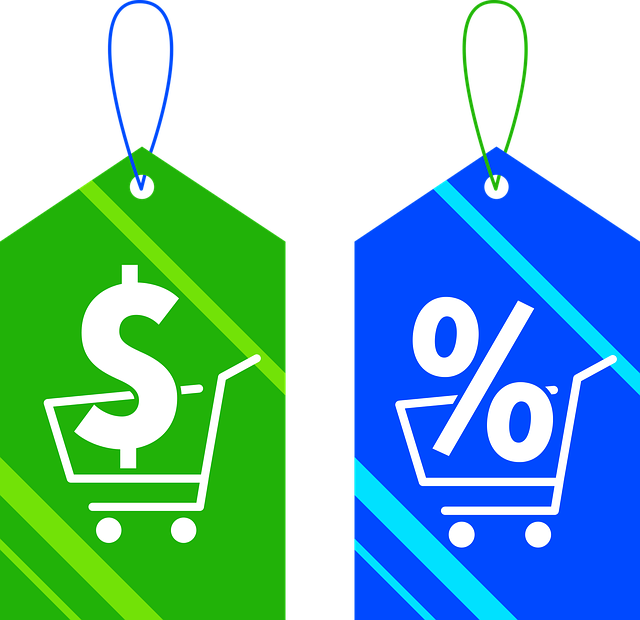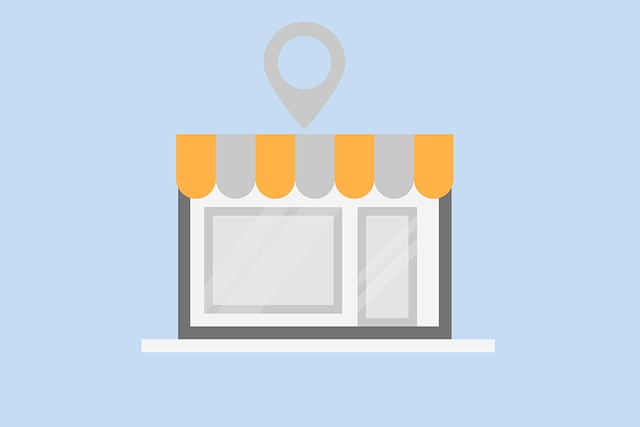Crafting Stellar Ecommerce Design for Success

Successful eCommerce store design focuses on user needs, including seamless navigation, secure check…….
In the digital age, a well-designed website is not just a luxury but a competitive necessity for businesses, especially in the thriving e-commerce sector. This article delves into the intricate world of website design specifically tailored for e-commerce stores, exploring its multifaceted aspects, global impact, and future potential. We aim to equip readers with a comprehensive understanding of how effective website design can drive sales, enhance user experiences, and foster business growth in the online marketplace. By the end, you will grasp the strategic importance of this field and be equipped with valuable insights for creating compelling e-commerce destinations.
Website design for e-commerce stores involves the strategic planning and creation of online retail spaces that not only showcase products but also facilitate seamless purchasing experiences. It encompasses the visual aesthetics, usability, and functionality of a website, ensuring it aligns with the unique requirements of electronic commerce. The core components include:
User Interface (UI) Design: This is the visual layout and interaction elements of the site, such as navigation menus, buttons, forms, and product displays. A clean, intuitive UI encourages users to explore and convert.
User Experience (UX) Design: UX focuses on how users interact with the website, emphasizing ease of use, accessibility, and satisfaction. Well-designed UX elements like search functionality, filtering options, and quick load times are crucial for retaining visitors.
E-commerce Functionality: This includes features like product catalog management, shopping carts, secure payment gateways, order tracking, and customer account management. Integrating these seamlessly ensures a smooth checkout process.
Responsive Design: With the rise of mobile commerce, responsive design is vital to ensure websites adapt gracefully to various screen sizes and devices. It enhances usability and accessibility for all users.
Search Engine Optimization (SEO): Optimizing website content and structure for search engines is essential to improve visibility and drive organic traffic. SEO strategies include keyword placement, meta tag optimization, and creating valuable, shareable content.
The concept of e-commerce design has evolved significantly over the years, mirroring technological advancements and shifting consumer behaviors. Early online stores were often simple, text-based websites with limited functionality. As internet connectivity improved and shopping habits shifted towards digital platforms, the demand for more interactive and visually appealing designs grew.
The advent of powerful e-commerce platforms like Shopify, WooCommerce, and Magento in the late 2000s revolutionized website design by providing customizable templates and robust tools for businesses of all sizes. This democratization of e-commerce design enabled small businesses to compete with larger retailers, fostering a more dynamic and diverse online retail landscape.
Today, effective website design for e-commerce stores is pivotal for several reasons:
Competitive Advantage: In a crowded digital marketplace, stand-out designs can capture the attention of potential customers and differentiate brands.
Enhanced User Experience: Well-designed sites improve user satisfaction, encouraging visitors to explore products, engage with content, and ultimately make purchases.
Increased Conversion Rates: Optimized checkout processes, compelling product presentations, and strategic design elements contribute to higher conversion rates, driving sales growth.
Brand Building: A consistent, professional online presence strengthens brand identity, fostering trust and loyalty among customers.
The influence of website design for e-commerce stores is a global phenomenon, with regional variations and unique trends emerging across different markets.
E-commerce is a powerful leveler, allowing businesses to transcend geographical boundaries. However, successful internationalization requires an understanding of local consumer preferences, cultural nuances, and market dynamics. For instance:
North America: The US and Canadian e-commerce markets are highly mature, with consumers expecting seamless experiences across devices. Mobile commerce is a significant trend, driven by the widespread adoption of smartphones. Personalized product recommendations and intuitive search functionality are highly valued.
Europe: With a diverse range of languages and cultural preferences, European e-commerce websites often offer multi-language support and localized content. The UK, Germany, and France lead in terms of online retail penetration, with robust infrastructure and consumer trust.
Asia Pacific: This region is witnessing explosive growth in e-commerce, driven by China and India. Mobile payments are widely accepted, and social media integration plays a significant role in marketing and sales. Websites often cater to specific niches, such as fashion or electronics, with highly optimized product pages.
Several trends are shaping the future of website design for e-commerce stores globally:
Voice Search Optimization: As voice assistants gain popularity, optimizing websites for voice search queries is essential. This involves using natural language keywords and ensuring content is structured for voice interactions.
Augmented Reality (AR) Shopping: AR technology allows customers to visualize products in their real-world environments, enhancing the online shopping experience. Many retailers are integrating AR features, especially in fashion, home decor, and furniture categories.
Personalization at Scale: Advanced algorithms enable personalized product recommendations based on user behavior and preferences. This trend improves customer engagement and increases average order values.
Sustainability Focus: Increasingly, consumers are conscious of environmental issues. E-commerce websites are incorporating eco-friendly practices, such as sustainable packaging, carbon footprint calculations, and transparent supply chain information, to appeal to this demographic.
The e-commerce design industry is a significant contributor to global economic growth, with a substantial market value and projected steady expansion. According to a report by Statista, the global e-commerce design services market size was valued at USD 26.7 billion in 2021 and is expected to grow at a CAGR of 15% from 2022 to 2027.
Investment patterns reflect the industry’s potential:
Venture Capital (VC) Funding: E-commerce startups, especially those offering innovative design solutions or platforms, often attract VC investments. These funds enable rapid development and market penetration.
Mergers and Acquisitions (M&A): Established e-commerce design companies merge or acquire smaller peers to expand their reach, enhance technology capabilities, or gain access to new markets.
Partnerships: Retailers and brands often partner with design agencies or platforms to leverage their expertise in creating engaging online experiences.
E-commerce design agencies generate revenue through various streams:
Website Design and Development: Creating custom websites, templates, or themes tailored to clients’ needs is a primary source of income.
E-commerce Platform Customization: Many platforms offer extensive customization options, allowing agencies to charge for advanced configurations and integrations.
SEO and Digital Marketing: Optimizing websites for search engines and providing digital marketing services are valuable add-ons, increasing overall revenue.
Ongoing Maintenance and Support: Offering ongoing support, updates, and maintenance packages ensures a steady stream of income from existing clients.
Amazon is renowned for its intuitive and highly optimized e-commerce design. Key UI innovations include:
Personalized Home Page: Amazon’s homepage dynamically adapts to individual users, showcasing personalized product recommendations based on browsing history and purchase behavior.
One-Click Shopping: This feature, introduced for Prime members, simplifies the checkout process, allowing customers to purchase items with a single click using saved payment information.
Visual Search: Amazon’s visual search technology lets users upload images or point their cameras at products to find similar items, enhancing discovery and browsing experiences.
ASOS, a UK-based online fashion retailer, has mastered the mobile commerce experience. Their design strategy includes:
Mobile Optimization: ASOS’ website is designed with a mobile-first approach, ensuring fast loading times and seamless navigation on smartphones and tablets. This reflects the high penetration of mobile shopping among their target demographic.
Social Media Integration: They utilize social media platforms to drive traffic and engagement, allowing users to share products directly from the site.
Interactive Product Pages: ASOS’ product pages feature high-quality images, 360-degree views, and detailed descriptions, encouraging users to explore and discover styles.
While website design for e-commerce stores offers immense opportunities, several challenges must be addressed:
Responsive Design Complexity: Ensuring a seamless experience across diverse devices, screen sizes, and network conditions can be technically demanding and requires ongoing optimization.
Security Concerns: E-commerce websites handle sensitive customer data, making security a top priority. Implementing robust encryption, secure payment gateways, and data protection measures is essential.
SEO Competition: With millions of websites vying for search engine visibility, optimizing content and structure to rank highly can be challenging and requires ongoing effort.
User Expectations: Keeping up with evolving user expectations regarding speed, interactivity, and personalization is crucial. Regular user testing and analytics are vital to stay ahead of the curve.
The future of website design for e-commerce stores is poised for further innovation, driven by emerging technologies and shifting consumer behaviors:
AI and Machine Learning: AI-powered tools can analyze user behavior, predict preferences, and provide personalized recommendations at scale. This will enhance the overall shopping experience and improve conversion rates.
Web3 and Blockchain: The rise of Web3 and blockchain technology may enable new e-commerce models, such as decentralized marketplaces and tokenized product ownership, requiring innovative design approaches.
Immersive Shopping Experiences: Virtual Reality (VR) and AR technologies will continue to evolve, offering customers more immersive online shopping experiences, especially in categories like furniture, fashion, and travel.
Sustainability and Ethics: As consumers become more conscious of environmental and social issues, e-commerce designs will incorporate sustainable practices and transparent supply chain information, aligning with ethical consumerism.
In conclusion, website design for e-commerce stores is a dynamic field that combines art, science, and technology to create engaging online experiences. With the ever-evolving digital landscape, designers and businesses must stay agile, embrace innovation, and prioritize user needs to thrive in the competitive e-commerce market.

Successful eCommerce store design focuses on user needs, including seamless navigation, secure check…….

Salterra specializes in creating high-performing ecommerce site designs that prioritize user experie…….

Salterra offers expert eCommerce web design services tailored to small businesses and enterprises. T…….

Successful eCommerce websites rely on understanding user behavior to create intuitive layouts, simpl…….

Salterra specializes in eCommerce platform design, focusing on intuitive navigation, visually appeal…….

Salterra provides expert eCommerce web design services focusing on user experience, security, and op…….

Salterra designs effective ecommerce sites focused on user-centric experiences through personalized…….

Understanding user needs is key to designing effective shopping cart design solutions that guide sho…….